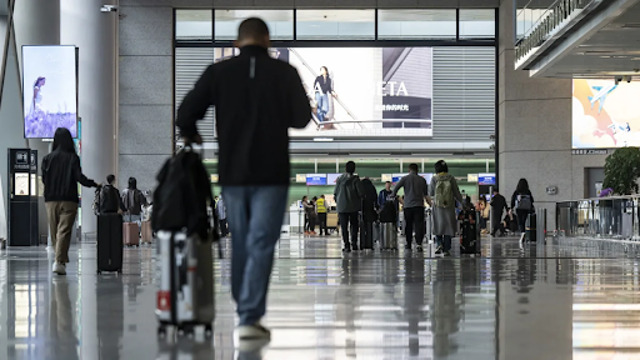
Passengers at Shanghai's Hongqiao International Airport. Shanghai, mainland China's largest city, remains the top destination for tourists. Getty Images
China has taken another significant step to boost foreign tourism by expanding its visa-free transit policy. Visitors can now stay in the country for up to 10 days—240 hours—without a visa, tripling the previous options of 72 hours (3 days) and 144 hours (6 days). The move aims to make short visits to China more accessible and less daunting for international travelers.
This updated policy applies to citizens of over 50 countries, including the United States. Under the program, eligible visitors with confirmed onward flight tickets to a third country or region can enter China visa-free and explore for a limited period before departing. However, travelers must stay within the designated areas of the city they arrived in. For example, those arriving in Shanghai can travel within the broader Shanghai region, which includes Jiangsu and Zhejiang provinces. Restrictions still apply to special regions like Tibet, where additional permissions are required for foreigners.
Hong Kong and Macao are also counted as “third destinations” under the new policy, providing tourists more flexibility when planning their itineraries.
The Chinese government has been actively working to revive its international tourism sector, which struggled to bounce back following the Covid-19 pandemic. This effort seems to be paying off. According to official statistics, between January and November 2024, over 29 million foreigners entered mainland China, marking an 86.2% increase compared to the previous year. The visa-free transit program alone accounted for 17 million visitors, reflecting a massive year-on-year growth of 123.3%.
Shanghai remains the most popular entry point, with over four million foreign visitors using the program to access the city and surrounding regions. This popularity can be attributed to Shanghai’s vibrant attractions and easy access to nearby provinces.
Tourism experts see this visa expansion as a clever move to make China more appealing, particularly for travelers looking to experience its culture and landmarks without the hassle of lengthy visa applications. Many tourists previously viewed the visa process as complicated and time-consuming, often deterring them from visiting the country. This policy removes some of those barriers and allows for spontaneous or short-term travel.
China’s strategy doesn’t stop with visa simplification. The government has also made notable efforts to improve travel convenience for foreigners. The country’s leading e-payment platforms, WeChat and Alipay, now accept non-Chinese credit cards, easing payment challenges for international visitors. These apps also feature built-in translation tools and simplified identity verification, making transactions smoother.
Additionally, a new mandate requires major tourist attractions and high-rated hotels to accept international credit cards, further reducing the stress foreign visitors may face when paying for accommodations or sightseeing. These changes are part of a broader push to ensure a more welcoming and seamless experience for travelers.
By making it easier for tourists to visit, spend, and explore, China hopes to regain its position as a global tourism hotspot. With iconic destinations like the Great Wall, the Forbidden City, and vibrant cities like Shanghai and Beijing, the expanded visa-free policy is a step toward inviting the world to experience the country’s rich heritage and modern appeal.















